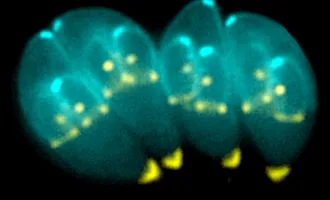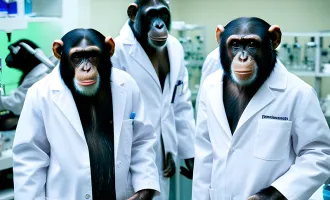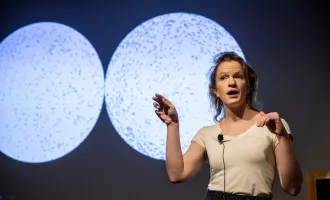Journal Club: Microbiology, Cancer Biology, Chemical Biology, and Neuroscience
MICROBIOLOGY: A systematic analysis of biosynthetic gene clusters in the human microbiome reveals a common family of antibiotics. Donia, M.S., et al. (Fischbach). Cell. 2014. 158:1402-1414.
Scientists increasingly appreciate that the huge number of microorganisms living on the human body do not merely exist passively, but rather interact heavily with the cells of the body, each influencing the other. These interactions often rely on small molecules produced by the microbiota.
The Fischbach group made a systematic investigation of this phenomenon, as reported in this recent paper. They analyzed more than 2,000 reference genomes of human microbiota and identified a few thousand likely biosynthetic gene clusters.
They observed that genes encoding proteins to synthesize thiopeptides are present in many microbiota. They studied one particular thiopeptide, lactocillin, and found that it had powerful activity against Gram-positive bacteria. They anticipate further study of these biosynthetic gene clusters will reveal many additional molecules with drug-like activities.
CANCER BIOLOGY: Loss of oncogenic Notch1 with resistance to a PI3K inhibitor in T-cell leukaemia. Dail, M. et al. (Shannon). Nature. 2014. 513:512-516.
Today, new anti-cancer drugs are usually targeted therapies that seek to exploit particular mutations of the tumor, thereby causing fewer side effects than traditional chemotherapy. One such drug under development for the treatment of T-cell acute lymphoblastic leukemia (T-ALL) inhibits the protein PI3K.
PI3K signaling is aberrantly high in a majority of T-ALL cases, as is Notch1. In this paper, Dail and colleagues studied resistant clones that emerged eventually after treatment with the PI3K inhibitor and found that they generally showed loss of excessive Notch1 activity. They further found that decreased Notch1 led to increased PI3K signaling pathway activity.
Since both pathways are frequently mutated in T-ALL, one might imagine that going after both at once, by giving two targeted therapies, would be more effective than either alone. Given the above results, however, the authors suggest that such treatment might unexpectedly promote the development of drug resistance.
CHEMICAL BIOLOGY: Unraveling the mechanism of cell death induced by chemical fibrils. Julien, O., et al. (Wells). Nat Chem Biol. 2014 Sept. 28. Epub ahead of print.
Protein fibrils build up and lead to cell death in a variety of neurodegenerative diseases, such as Alzheimer's disease and Parkinson's disease. The precise mechanism by which such aggregates lead to cell death is unclear.
The Wells group previously identified a small molecule that induces cell death. In this paper, they report that spontaneously formed fibrils of the molecule lead to cell death whereas the soluble form does not.
After determining that the endocytosis pathway was involved in the cytotoxicity, they further found that these fibrils accumulated within the lysosomes of cells and observed that the fibrils caused liposome leakage in vitro. The authors suggest this as a useful model for cytotoxicity from protein fibrils.
NEUROSCIENCE: Nuclear envelope protein MAN1 regulates clock through BMAL1. Lin, S-T, et al. (Fu). eLife. 2014. 3:e02981.
Our daily cycles of wakefulness and sleepiness emerge from our internal pacemaker called the circadian rhythm. At the heart of this rhythm generation are the transcription factors BMAL1 and CLOCK.
In this article, the authors have identified a role for the nuclear envelope in regulating these circadian rhythm components. They determined that the expression levels of three nuclear membrane components varied with the circadian rhythm. They further found that one of these proteins, MAN1, in turn binds the BMAL1 promoter and helps support its expression.
Such a direct role for the nuclear envelope in controlling gene expression is not unprecedented, as recent research has demonstrated that the nuclear envelope harbors both repressive and activating factors, but this is the first time it has been shown to involve this essential system.


